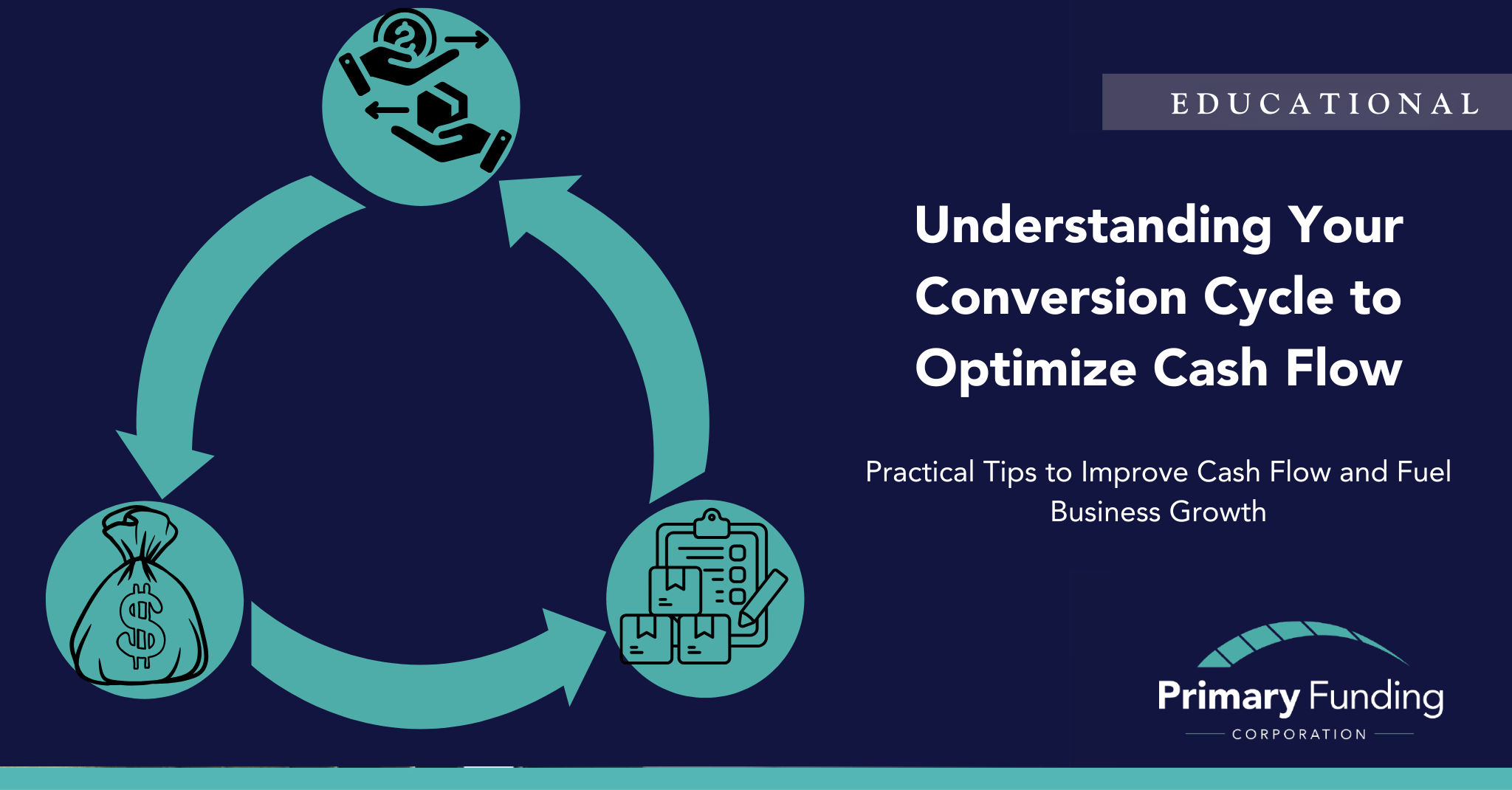Cash flow is the lifeblood of any business. For many small to mid-sized companies, cash flow challenges often stem from a misunderstood or mismanaged conversion cycle. By understanding and optimizing your conversion cycle—the time it takes to convert investments in inventory and resources into cash—you can significantly improve your business’s financial health.
What is the Conversion Cycle?
Your conversion cycle tracks how long it takes to turn an initial cash outlay (like purchasing inventory) into cash received from sales. It consists of three main components:
- Inventory Turnover – The time it takes to sell inventory.
- Accounts Receivable Turnover – The time it takes to collect payment after a sale.
- Accounts Payable Turnover – The time you have to pay your suppliers.
A shorter conversion cycle generally means stronger cash flow, while a longer one may signal potential cash flow bottlenecks.
How to Optimize Your Conversion Cycle
- Streamline Inventory Management
Avoid overstocking by implementing real-time inventory tracking and just-in-time (JIT) strategies. Reducing excess inventory can free up cash for other priorities. - Improve Accounts Receivable Processes
Offer multiple payment options and incentives for early payment. Regularly follow up on overdue invoices to reduce collection times. - Negotiate Favorable Payment Terms with Suppliers
Extending payment terms can give you more time to convert sales into cash before you need to settle your payables.
Why It Matters
Optimizing your conversion cycle can create a more predictable cash flow and provide the working capital needed to fuel growth. For businesses experiencing rapid expansion or seasonal fluctuations, this can be the key to staying agile and competitive.
Need help improving your cash flow? Check out our blog on Top Cash Flow Management Tips for Small Businesses.
